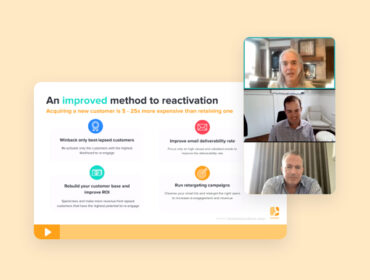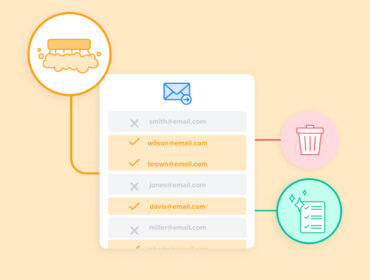Addressability solutions for a cookieless world
Imagine sending a bunch of wedding invitations. You have them all beautifully designed, in their neat little envelopes, and ready to go out in the mail. But then you realize you don’t actually have the addresses of your invitees.
So even though your message is prepared, you don’t have any way to actually get it to the right people, know if they received it, or hear back from them.
That’s the problem many publishers and advertisers face. With the cookiepocalypse underway, they now have to reinvent the way they identify and reach their audiences across the web.

Thankfully, there’s a range of unique solutions out there to help businesses optimize addressability and reap the benefits of this new age of targeting.
Here’s what you need to know.
What is addressability and why is it so important?
Addressability is the ability to identify and reach specific people through an ad campaign. An addressable audience is one that you can clearly track and identify through data, such as the email address.
Addressability is important because it allows a company to understand how and where to engage its target audience. With clear data about how specific people engage with campaigns, the company can then build unique audience segments, create personalized messaging, and launch targeted campaigns that drive engagement and revenue.
What’s the addressability problem?
Addressability used to be simple. Before the internet, companies could just create mailing lists and reach people through direct mail. They knew where the message was going and who it was going to.
Once advertising moved online, addressability became more complex. Companies had to use different tracking solutions, like third-party cookies, to track customers across websites and platforms. While this allowed them to better scale their campaigns, they were also left with muddier data and largely anonymous audiences that were difficult to connect across channels.
With third-party cookies going away, companies are forced to rethink addressability and new ways of identifying their audiences. The good news is that this presents an opportunity to take back control of their data and better understand their customers.
They just need the right solutions to navigate this major shift.
Which addressability solutions are already out there?
Google gave businesses a two-year head start before it removes third-party cookies from its Chrome browser. However, Safari and Firefox had already disabled third-party cookies on their browsers. Now, many platforms are hard at work developing addressability solutions so when third-party cookies go away, advertisers won’t be left stranded without a lifeboat.
Let’s take a look at some of those solutions and their unique benefits.
Universal ID
A universal ID is a single, standardized type of identifier that companies use to track audiences across the web. With third-party cookies, websites and platforms often used their own IDs, which required them to sync data with one another for a complete view of their customer. This process resulted in a lot of lost and mismatched data. In one example, an advertiser lost data from 60 million users by transferring its cookies to a DSP.
For this reason, ad tech organizations like The Trade Desk, IAB, and LiveRamp are creating universal IDs as an alternative. So, companies that buy into their universal ID become part of a data-sharing community, ensuring improved data matching and consumer tracking.
The problem is that many of those organizations still rely on third-party cookies to create their universal IDs. As IAB Tech Lab’s Jordan Mitchell told Digiday, “Without third-party cookies, we are only left with per-domain identifiers using first-party cookies, and it becomes impossible for third parties to set or recognize any form of shared or universal ID across domains.”
Encrypted ID
Like universal IDs, the digital ecosystem also shares encrypted IDs. However, it better protects consumer privacy and ensure a secure transfer of data than other shared ID solutions.
nonID
LiveIntent’s nonID is an encrypted ID that helps companies use their most valuable first-party data – email addresses – to connect to the larger digital ecosystem.
The nonID unifies customer interactions tied to an authenticated email address across devices and channels. LiveIntent then gives that data back to you so you can build better ad campaigns.
LiveIntent has partnered with companies like Magnite and MediaMath to improve audience resolution and addressability across the web with the nonID.
Unified 2.0
The Trade Desk took its Unified ID solution and made it encrypted with Unified ID 2.0 – a free, open-source framework that uses hashed and encrypted email addresses. Unlike its initial Unified ID, the new version won’t rely on third-party cookies.
How it works: a website prompts website visitors to provide their email address by logging into the site. Then the website visitor receives information about why and how their data will be used. An SSO provider can help a publisher translate the email used during the login into a Unified ID 2.0. Then, a publisher can make the Unified ID 2.0 one of the IDs they support in the bidstream for available impressions across their properties.
FLEDGE and FLoCs
FLoC, or “Federated Learning of Cohorts,” is a Google initiative that uses browser data to group Chrome users into cohorts that advertisers can target. With the release of Chrome 89, Google builds on their previously introduced TURTLEDOVE proposal with an experiment titled FLEDGE. The proposal intends to enable retargeting in a world without third-party cookies, using data stored and processed on-device.
Within the FLoC proposal, the Chrome browser determines which cohort a user belongs to based on their browsing behavior. The goal is to keep cohorts large enough to prevent micro-targeting. On the other hand, FLEDGE enables advertisers, publishers, and ad tech providers to add users to interest groups they define.
Here’s how that works: A company puts a snippet of code on their website that assigns users to an interest group. The Chrome browser then stores membership to that group, and only in the browser. The interest group owner defines the advertisers or ad networks that can bid on the group(s) they create. When someone visits a site, a publisher can run an on-device auction for advertisers targeting an interest group. The difference is that the ad auction takes place in the browser instead of an independent ad server.
A first-party solution to a third-party problem
Regardless of which solution brands and publishers choose, one thing is clear: They’ll inevitably need to build up their first-party data footprint to survive.
That means they need to double down on direct-to-consumer channels, like email, and build those one-to-one relationships with their audiences. This way, they can collect data straight from their consumers, improve campaign targeting, and not only survive in a cookieless world but actually be better for it.


